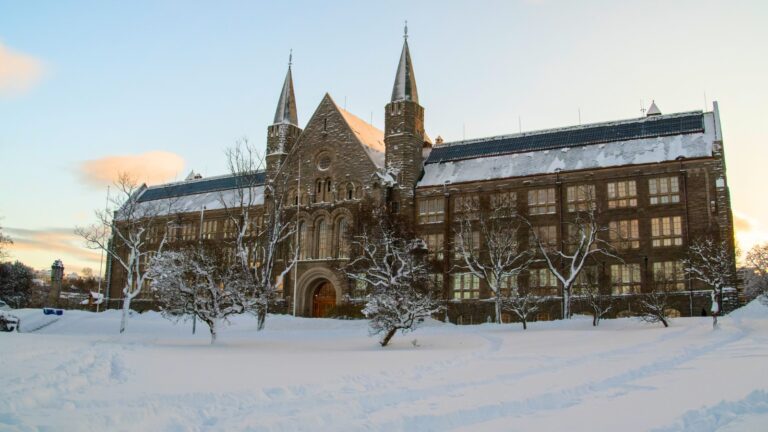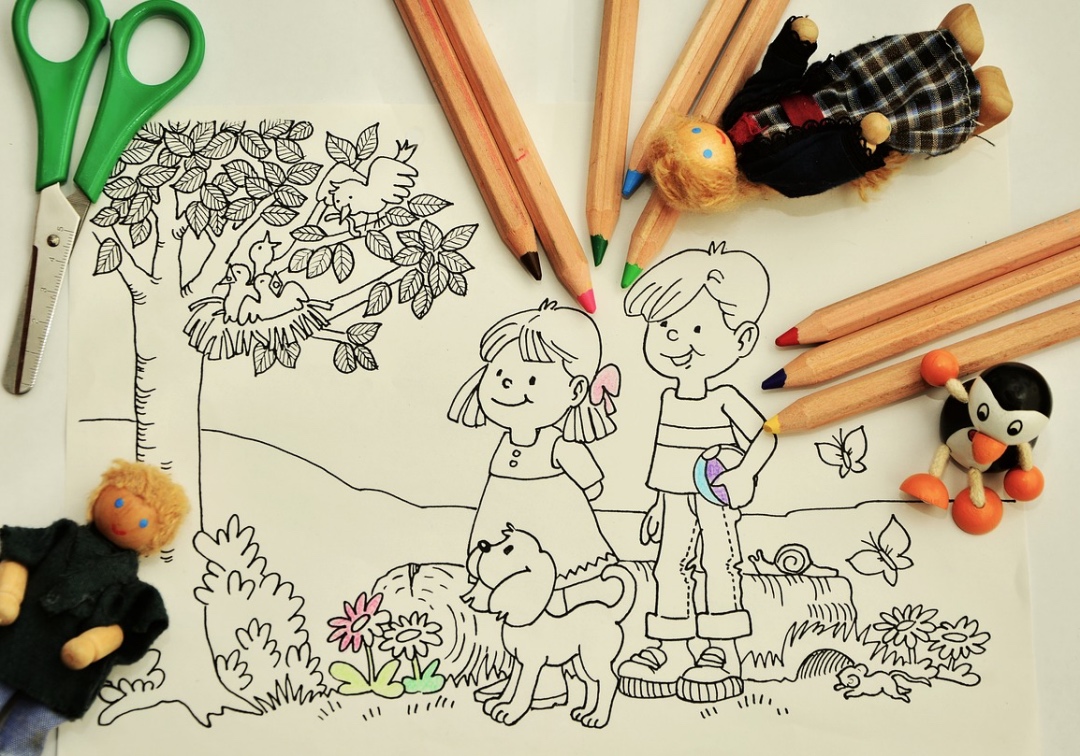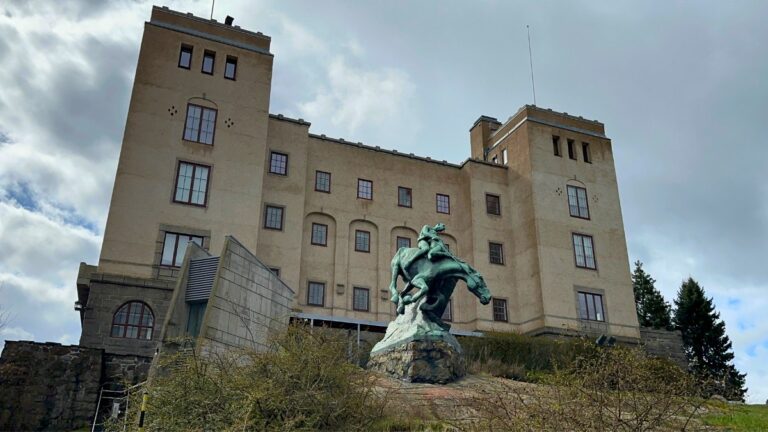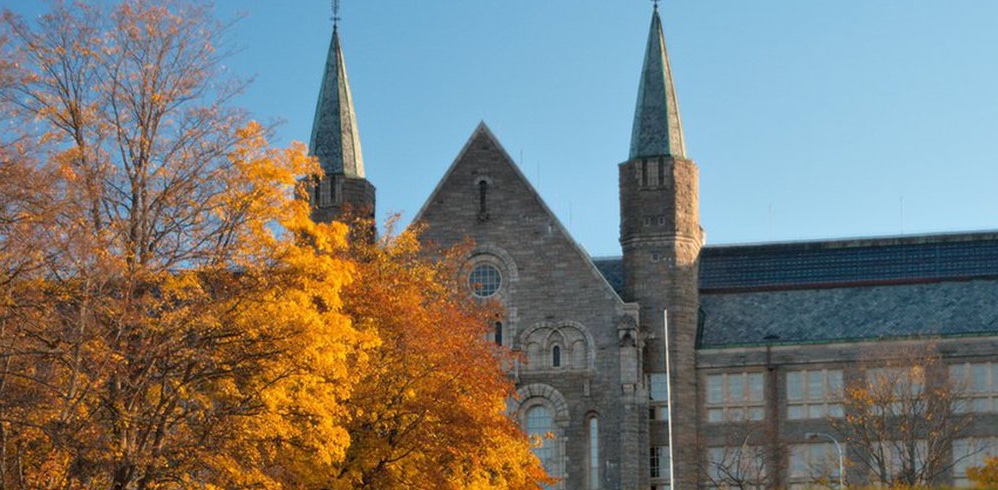For families moving to Norway, education is often one of the biggest considerations, whether you are enrolling a toddler into daycare or a teenager into school.
Norway’s education system is designed to be accessible, inclusive, and affordable, offering opportunities from the very earliest years of life all the way through to university and beyond.

The Norwegian model is distinctive in several ways. Pre-school attendance is almost universal, children start compulsory education later than in many other countries, and higher education is free for most students.
Equality is a guiding principle, with a strong emphasis on ensuring that all children have access to the same opportunities regardless of background.
This guide takes you through the Norwegian education system step by step, from barnehage to university. Unless otherwise stated, data comes from Statistics Norway and OECD reports.
Pre-School and Daycare (Barnehage)
A barnehage is a pre-school institution for children under the age of six. The word is sometimes translated as nursery or kindergarten, but the system is much broader than in many countries.
Children are entitled to a place from the August of the year they turn one, and most Norwegian families take advantage of this.
Barnehage has two central goals: to provide safe, stimulating care for children while parents work, and to give children a strong start in life through social development, play, and outdoor learning.
The philosophy is less about formal education and more about encouraging independence and cooperation. Outdoor play is a priority, with many barnehager following the principles of friluftsliv, Norway’s cultural tradition of spending time in nature.

Attendance is near universal. In 2021, 93.8% of children aged 1–5 attended a barnehage, with attendance rising to 97.2% among children aged 3–5. This is one of the highest participation rates in Europe.
Costs are subsidised by the state, and parental fees are capped through the so-called “max price” scheme. As of 2024, the maximum monthly fee is NOK 3,000 per child, with discounts for siblings and free core hours for low-income families.
Primary and Lower Secondary School
Compulsory education begins at the age of six and continues until age 16, covering ten years of schooling. The first seven years are spent in barneskole (primary school), followed by three years in ungdomsskole (lower secondary school).
The curriculum is broad and designed to provide a solid foundation in key subjects including Norwegian, mathematics, science, English, social studies, arts, and physical education.
Digital skills are also emphasised, and many schools provide tablets or laptops for pupils.
In 2021, there were 439,644 pupils in primary schools and 195,030 in lower secondary schools, giving a total of more than 630,000 children.
For children in grades 1–4, municipalities are required to offer after-school programmes known as SFO (skolefritidsordning) or AKS in Oslo. These provide care and structured activities before and after lessons, helping working parents manage their day.

For non-Norwegian speaking pupils, schools must provide additional support to help them reach an adequate level of Norwegian. Inclusion is a core value, and children with special educational needs are integrated into mainstream classrooms wherever possible.
International Schools in Norway
While most foreign families choose to send their children into the regular Norwegian school system, there are also several international schools across the country.
These schools typically follow international curricula such as the International Baccalaureate (IB) or British and American systems, and they teach primarily in English.
International schools are most common in Oslo, Stavanger, and Bergen, but there are also options in Trondheim and other cities with international communities.
They can be a good choice for families on shorter postings to Norway, or for children who will continue their studies abroad and need to stay within a familiar educational framework.
Unlike public education in Norway, international schools usually charge tuition fees, although some employers may cover the costs as part of an expat package.
Class sizes are often smaller than in Norwegian public schools, and the schools tend to place a strong emphasis on international diversity and cultural understanding.
Upper Secondary School (Videregående)
After compulsory schooling, teenagers progress to videregående skole, which covers three years of general studies or four years of vocational training. Education at this level is free and almost universal, though it is not strictly compulsory.
Students must apply for a place, and while there is an element of choice, priority is given based on grades. Two main paths are available:
- General studies (studieforberedende): A three-year programme that qualifies students for university or college.
- Vocational studies (yrkesfag): Usually a 2+2 model: two years in school followed by two years of apprenticeship training in the workplace.
In 2021, there were 198,898 pupils in upper secondary schools, along with 49,143 apprentices and 1,838 trainees.

Completion rates are strong by international standards. According to Statistics Norway, 82% of pupils complete upper secondary education within five to six years.
However, there are differences: 86% of girls complete their programme compared with 78% of boys. There are also disparities linked to immigrant background, with completion rates around 67% among immigrants, compared to 85% among the rest of the population.
Post-Secondary Vocational Education (Fagskole)
For those who do not pursue a university degree, fagskole (tertiary vocational education) provides further opportunities. These programmes last from six months to two years and are designed to give students practical, career-oriented skills.
Fields such as health, technical subjects, welfare, and business are particularly popular. In 2021, 25,919 students were enrolled in such programmes.
These institutions bridge the gap between vocational upper secondary education and the labour market, and graduates are often highly employable.
Higher Education in Norway
Norway follows the Bologna model used across Europe, with a structure of three years for a bachelor’s degree, two years for a master’s, and three years for a PhD.
There are both universities and university colleges. Universities focus on research and offer a full range of programmes, while colleges tend to specialise in professional training such as teaching, nursing, or engineering.
Tuition at public institutions has traditionally been free for all, including international students.
However, a major change came in 2023: students from outside the EU/EEA and Switzerland are now required to pay tuition fees at public universities. For Norwegians, EU/EEA students, and exchange students, tuition remains free.
In 2021, there were 318,105 students in higher education in Norway. Popular subjects include natural sciences, engineering, and health-related fields. Women are particularly well represented: more than 60% of higher education students are female.

Studying abroad remains attractive to some Norwegians. Traditional destinations include Denmark, the UK, the United States, and Poland.
If you’re wondering what a Norwegian university is like, check out our guide to NTNU in Trondheim.
Adult and Lifelong Learning
Norway places great emphasis on lifelong learning. Adults who did not complete their education earlier in life are entitled to primary, lower secondary, or upper secondary education free of charge. Adults over the age of 25 who have not completed videregående may apply for the right to do so.
Study associations and distance learning providers offer courses ranging from basic literacy to university-level studies. Many employers also support continuing education and training for staff.
Another distinctive part of Norway’s educational landscape is the folk high school (folkehøgskole) system.
These one-year experiences, popular with young adults, do not have exams or formal curricula. Instead, they focus on personal development, social skills, and topics such as music, outdoor life, or travel.
Homeschooling in Norway
Homeschooling is permitted in Norway but remains very uncommon. In the 2022/23 school yer, only 247 children were in home-based education.
Parents who wish to homeschool must apply to their local municipality for an exemption from compulsory schooling, providing a written plan that shows how their child’s education will align with the national curriculum.
Municipalities are responsible for oversight and usually carry out evaluations once or twice a year. During these meetings, parents present samples of the child’s work to demonstrate that progress is comparable to that in public schools.
No formal teaching qualifications are required, but the responsibility is significant, and there is no financial support available. Some municipalities may, however, provide access to textbooks or online resources.
In recent years, concerns have been raised about inconsistent oversight across municipalities. The government has signalled its intention to strengthen regulations in a new Education Act, expected to come into force in the near future.
Key Takeaways for Foreign Families
Norway’s education system is built on the principle of equality and accessibility. From affordable barnehager to free higher education for most, the system removes many of the financial barriers found elsewhere.
For foreign parents, the main challenges are usually linguistic and cultural rather than financial. Children adapt quickly, and schools provide language support, but families should expect integration into the Norwegian-language system rather than long-term parallel tracks.
For older students, Norway offers both academic and vocational routes, ensuring flexibility and strong connections to the labour market. The tradition of free higher education remains a huge advantage, though students from outside Europe should be aware of the new tuition fee requirements.
Overall, education in Norway reflects the country’s wider values: equality, inclusion, and a deep respect for learning as a lifelong process.


David,
Thank you for your weekly reports on Norway, they are very interesting.
Regarding higher education, which will be the procedure to apply for a master degree in industrial engineering for a student from Colombia?
Thank you!
Thank you for your useful website. I’d like to know about the condition and fees and Insurance of international students children’s in Norway. Thanks in advance.
Hello David, I am hoping you could give me some advice. Are there courses or schools in Norway, where you can get your GED (General Equivalency Degree) or (equivalent high school degree) certification, in order to enroll in a university or college? I am asking for a friend who dropped out of high school (or upper secondary school) and wants to attend college. They are older and do not want to have to go back to high school. (It would be very awkward to be 22 years old and stuck in classes with 15 and 16 year olds) Any information would be greatly appreciated. Thank you so much.
What is the age limit of getting admission into the university in norway
On Wikipedia, it says that ‘ Prior to 1994 there were three branches of upper secondary schooling: “General” (language, history, etc.), “mercantile” (accounting, etc.), and “vocational” (electronics, carpentry, etc.) studies. The high school reform of 1994 (“Reform 94”) merged these branches into a single system. Among the goals of the reform was that everybody should have a certain amount of “general studies” large enough to make them eligible for higher education later, meaning more theory in vocational studies, and it should be possible to cross over from one education path to another without losing too much credit. In the old system, two years of carpentry would be wasted if you wanted to switch to general studies, but in the new system you could keep credit for at least half of it.’
Is this still true today?